 W
WMasonry is the building of structures from individual units, which are often laid in and bound together by mortar; the term masonry can also refer to the units themselves. The common materials of masonry construction are brick, building stone such as marble, granite, and limestone, cast stone, concrete block, glass block, and adobe. Masonry is generally a highly durable form of construction. However, the materials used, the quality of the mortar and workmanship, and the pattern in which the units are assembled can substantially affect the durability of the overall masonry construction. A person who constructs masonry is called a mason or bricklayer. These are both classified as construction trades.
 W
WStonemasonry or stonecraft is the creation of buildings, structures, and sculpture using stone as the primary material. It is one of the oldest activities and professions in human history. Many of the long-lasting, ancient shelters, temples, monuments, artifacts, fortifications, roads, bridges, and entire cities were built of stone. Famous works of stonemasonry include the Egyptian pyramids, the Taj Mahal, Cusco's Incan Wall, Easter Island's statues, Angkor Wat, Borobudur, Tihuanaco, Tenochtitlan, Persepolis, the Parthenon, Stonehenge, the Great Wall of China, Chartres Cathedral.
 W
WThis is a geographical list of natural stone used for decorative purposes in construction and monumental sculpture produced in various countries.
 W
WAnathyrosis is the technical word for the ancient method of dressing the joints of stone blocks in dry stone construction, i. e., masonry without mortar, which was then commonly used. Because the stone blocks are set in immediate contact with each other without gaps, their joints must be exactly dressed. In order to reduce the time required to sculpt such joints, the faces of the stones to be joined were finished and smoothed only in narrower margins on the sides and top of the faces to be joined, while the interior of adjoining faces were recessed. The smoothed margins of such a face together resemble a doorframe, and the word, created by the ancients, is allusive. Thyra (θύρα) is Greek for “door”, and thus “door framing” is anathyrosis.
 W
WAnkerske Naturstein is a stonemasonry company in Fauske, Norway.
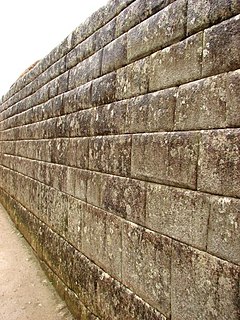 W
WAshlar is finely dressed stone, either an individual stone that was worked until squared or the structure built from it. Ashlar is the finest stone masonry unit, generally rectangular cuboid, mentioned by Vitruvius as opus isodomum, or less frequently trapezoidal. Precisely cut "on all faces adjacent to those of other stones", ashlar is capable of very thin joints between blocks, and the visible face of the stone may be quarry-faced or feature a variety of treatments: tooled, smoothly polished or rendered with another material for decorative effect.
 W
WBookmatching is the practice of matching two wood or stone surfaces, so that two adjoining surfaces mirror each other, giving the impression of an opened book.
 W
WStone carving is an activity where pieces of rough natural stone are shaped by the controlled removal of stone. Owing to the permanence of the material, stone work has survived which was created during our prehistory.
 W
WThe cornerstone is the first stone set in the construction of a masonry foundation. All other stones will be set in reference to this stone, thus determining the position of the entire structure.
 W
WDry stone, sometimes called drystack or, in Scotland, drystane, is a building method by which structures are constructed from stones without any mortar to bind them together. Dry stone structures are stable because of their construction method, which is characterized by the presence of a load-bearing façade of carefully selected interlocking stones.
 W
WFieldstone is a naturally occurring type of stone, which lies at or near the surface of the Earth. Fieldstone is a nuisance for farmers seeking to expand their land under cultivation, but at some point it began to be used as a construction material. Strictly speaking, it is stone collected from the surface of fields where it occurs naturally. Collections of fieldstones which have been removed from arable land or pasture to allow for more effective agriculture are called clearance cairns.
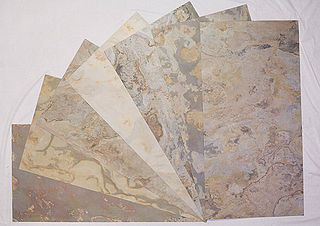 W
WFlexible stone veneer is a veneer with a layer of stone 1 to 5 mm thick. Flexible stone veneers should not be confused with traditional stone veneer. It is used for both interior and exterior and especially where bending to a curved surface is required. Flexible stone veneers are made from various types of slate, schist, or marble.
 W
WIn architecture, flushwork is the decorative combination on the same flat plane of flint and ashlar stone. If the stone projects from a flat flint wall then the term is proudwork, as the stone stands "proud" rather than being "flush" with the wall.
 W
WGable stones are carved and often colourfully painted stone tablets, which are set into the walls of buildings, usually at about 4 metres from the ground. They serve both to identify and embellish the building. They are also called "stone tablets" by the Rijksmuseum, which sometimes appends "from a facade". A "wall stone" is another suggested translation from the Dutch term.
 W
WA mason's mark is a symbol often found on dressed stone in buildings and other public structures.
 W
WThe National Concrete Masonry Association (NCMA) is a United States trade association of manufactures of concrete and masonry products. The association was founded in 1918.
 W
WThe NIST stone test wall is an experiment by the United States National Institute of Standards and Technology to determine how different types of construction stone weather. It includes 2352 samples of stone from 47 different states within the US and 16 different countries. The wall measures approximately 12 m long, 4 m high, 0.6 m thick at the bottom, and 0.3 m at the top.
 W
WOpus isodomum is an ancient technique of wall construction with ashlars. It uses perfectly cut, completely regular squared stone blocks of equal height, and sometimes of the same length.
 W
WA perpend stone, perpend, through stone, bond stone, or tie stone is a stone that extends through an entire wall's width, from the outer to the inner wall. Such stones are especially used to lock two wall layers structurally together. Usually stone walls are built with two layers of stone, an inner and an outer layer, with the space between them sometimes filled with rubble.
 W
WPortuguese pavement is a traditional-style pavement used for many pedestrian areas in Portugal. It consists of small flat pieces of stones arranged in a pattern or image, like a mosaic. It can also be found in Olivença and throughout former Portuguese colonies. Portuguese workers are also hired for their skill in creating these pavements in places such as Gibraltar. Being usually used in sidewalks, it is in town squares and atriums that this art finds its deepest expression.
 W
WQuoins are masonry blocks at the corner of a wall. Some are structural, providing strength for a wall made with inferior stone or rubble, while others merely add aesthetic detail to a corner. These imply strength, permanence, and expense, all reinforcing the onlooker's sense of a structure's presence.
 W
WRepointing is the process of renewing the pointing, which is the external part of mortar joints, in masonry construction. Over time, weathering and decay cause voids in the joints between masonry units, usually in bricks, allowing the undesirable entrance of water. Water entering through these voids can cause significant damage through frost weathering and from salt dissolution and deposition. Repointing is also called pointing, or pointing up, although these terms more properly refer to the finishing step in new construction.
 W
WRubble masonry is rough, uneven building stone set in mortar, but not laid in regular courses. It may appear as the outer surface of a wall or may fill the core of a wall which is faced with unit masonry such as brick or ashlar. Analogously, some medieval cathedral walls are outer shells of ashlar with an inner backfill of mortarless rubble and dirt.
 W
WRustication is a range of masonry techniques used in classical architecture giving visible surfaces a finish texture that contrasts with smooth, squared-block masonry called ashlar. The visible face of each individual block is cut back around the edges to make its size and placing very clear. In addition the central part of the face of each block may be given a deliberately rough or patterned surface.
 W
WScabbling—also called scappling—is the process of reducing stone or concrete. In masonry, it refers to shaping a stone to a rough square by use of an axe or hammer. In Kent, rag-stone masons call this "knobbling". It was similarly used to shape grindstones.
 W
WSlipform stonemasonry is a method for making a reinforced concrete wall with stone facing in which stones and mortar are built up in courses within reusable slipforms. It is a cross between traditional mortared stone wall and a veneered stone wall. Short forms, up to 60 cm high, are placed on both sides of the wall to serve as a guide for the stone work. The stones are placed inside the forms with the good faces against the form work. Concrete is poured in behind the rocks. Rebar is added for strength, to make a wall that is approximately half reinforced concrete and half stonework. The wall can be faced with stone on one side or both sides. After the concrete sets enough to hold the wall together, the forms are "slipped" up to pour the next level. With slipforms it is easy for a novice to build free-standing stone walls.
 W
WSnecked masonry has a mixture of roughly squared stones of different sizes. It is laid in horizontal courses with rising stones projecting through the courses of smaller stones. Yet smaller fillers called snecks also occur in the courses. The mixture of stone sizes produces a strong bond and an attractive finish. Large amounts of planning for bricklaying process should be considered, as the corners can not mold perfectly into every size stone. Additional stonecutting and on-the-scene stonecrafting skills may be required.
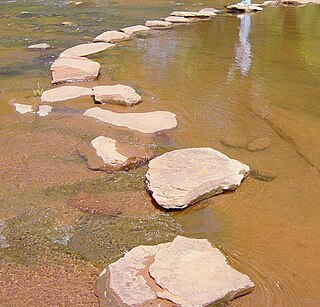 W
WStepping stones or stepstones are sets of stones arranged to form a simple bridge or causeway that allows a pedestrian to cross a natural watercourse, such as a river; or a water feature in a garden where water is allowed to flow between stone steps. Unlike other bridges, they have no spans. Although their origin is unknown, stepping stones, along with log bridges, are likely to have been one of the earliest forms of crossing inland bodies of water devised by humans.
 W
WStone carving in Odisha is the ancient practice of sculpting stone into art and utilitarian objects. It is an ancient practice in the Indian state of Odisha. Stone carving is practiced by artisans mainly in Puri, Bhubaneswar and Lalitgiri in the Cuttack district, though some carvings can be found in Khiching in the Mayurbhanj District. Stone carving is one of the major handcrafts of Odisha. The art form primarily consists of custom carved works, with the Sun Temple of Konark and its intricate sculpture and delicate carvings on the red vivid sandstone exemplifying the practice. Other noteworthy monuments include the Stupas of Udayagiri and Ratnagiri and the temples at Jagannath, Lingaraj, Mukteshwar and as well as other temples in the region.
 W
WStone veneer is a thin layer of any stone used as decorative facing material that is not meant to be load bearing. Stone cladding is a Stone veneer, or simulated stone, applied to a building or other structure made of a material other than stone. Stone cladding is sometimes applied to concrete and steel buildings as part of their original architectural design.
 W
WStone flaming or thermaling is the application of high temperature to the surface of stone to make it look like natural weathering. The sudden application of a torch to the surface of stone causes the surface layer to expand and flake off, exposing rough stone.
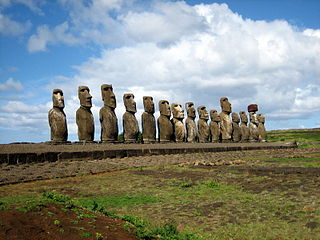 W
WA Stone sculpture is an object made of stone which has been shaped, usually by carving, or assembled to form a visually interesting three-dimensional shape. Stone is more durable than most alternative materials, making it especially important in architectural sculpture on the outside of buildings.
 W
WStone veneer is a thin layer of any stone used as decorative facing material that is not meant to be load bearing. Stone cladding is a Stone veneer, or simulated stone, applied to a building or other structure made of a material other than stone. Stone cladding is sometimes applied to concrete and steel buildings as part of their original architectural design.
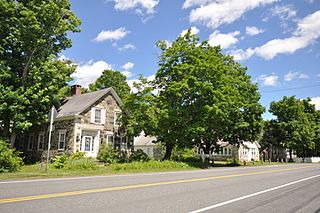 W
WThe Stone Village Historic District encompasses a distinctive collection of stone buildings on Vermont Route 103 in Chester, Vermont. Dating to the first half of the 19th century are a remarkable concentration of buildings constructed in a regionally distinctive snecked ashlar technique brought to the area by Scottish masons. The district was listed on the National Register of Historic Places in 1974.
 W
WStone walls are a kind of masonry construction that has been used for thousands of years. The first stone walls were constructed by farmers and primitive people by piling loose field stones into a dry stone wall. Later, mortar and plaster were used, especially in the construction of city walls, castles, and other fortifications before and during the Middle Ages. These stone walls are spread throughout the world in different forms. One of the best example is the Cyclopean Wall in Rajgir, India.
 W
WTuckpointing is a way of using two contrasting colours of mortar in the mortar joints of brickwork, with one colour matching the bricks themselves to give an artificial impression that very fine joints have been made. In some parts of the United States and Canada, some confusion may result as the term is often used interchangeably with pointing and repointing.
 W
WWitches' stones are flat stones jutting from chimneys in the island of Jersey.
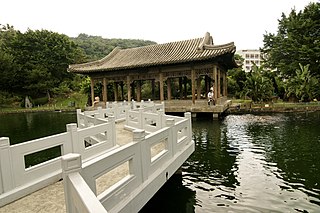 W
WA zig-zag bridge is a pedestrian bridge composed of short segments, each set at an angle relative to its neighbors and usually with an alternating right and left turn required when traveling across the bridge. It is used in standard crossings for structural stability; and in traditional and contemporary Asian and Western landscape design across water gardens.